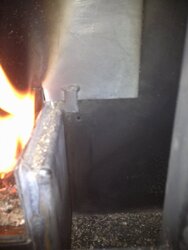- Dec 2, 2012
- 14
I have read through pages and pages of issues with the Englander PDVC-25 and haven't seen an issue exactly like mine described (I'm sure it's out there somewhere). At any rate, this is year 3 with my stove and after averaging about 2.5 tons a year through it I have had a few issues this season.
I have noticed that if I run the stove for a period of time at 3/3 (my standard setting) and shut it down, it has issues restarting. The stove goes into shut down mode fine, and will completely shut down like it always does, but during restart the upper auger will not turn and thus the stove will not start.
Now, I have employed a home remedy until I get a better idea how to trouble shoot it by unplugging the unit and plugging it back in. Most of the times the issue goes away and the upper auger feeds fine. On two occurrences over the last 3 days however I have received 2 different error codes. I received an E2, and E3 code after the unit went into start up mode, and the unit ignited the pellets.
It happened last night, and while the fan was still on as it hadn't cooled down after start up, I unplugged the unit, counted to ten and plugged it back in. The stove came back on after I pushed "ON" and now 10 hours later, the upper auger is turning without incident.
As unplugging the unit seems to "fix" or mask the issues most of the time I have ruled out an auger motor issue. Am I right to do so? Should I think sensor, or perhaps a vacuum line? I am not sure the role the vacuum line plays so I would be very appreciative of any advice or words of wisdom. Thank you
I have noticed that if I run the stove for a period of time at 3/3 (my standard setting) and shut it down, it has issues restarting. The stove goes into shut down mode fine, and will completely shut down like it always does, but during restart the upper auger will not turn and thus the stove will not start.
Now, I have employed a home remedy until I get a better idea how to trouble shoot it by unplugging the unit and plugging it back in. Most of the times the issue goes away and the upper auger feeds fine. On two occurrences over the last 3 days however I have received 2 different error codes. I received an E2, and E3 code after the unit went into start up mode, and the unit ignited the pellets.
It happened last night, and while the fan was still on as it hadn't cooled down after start up, I unplugged the unit, counted to ten and plugged it back in. The stove came back on after I pushed "ON" and now 10 hours later, the upper auger is turning without incident.
As unplugging the unit seems to "fix" or mask the issues most of the time I have ruled out an auger motor issue. Am I right to do so? Should I think sensor, or perhaps a vacuum line? I am not sure the role the vacuum line plays so I would be very appreciative of any advice or words of wisdom. Thank you


